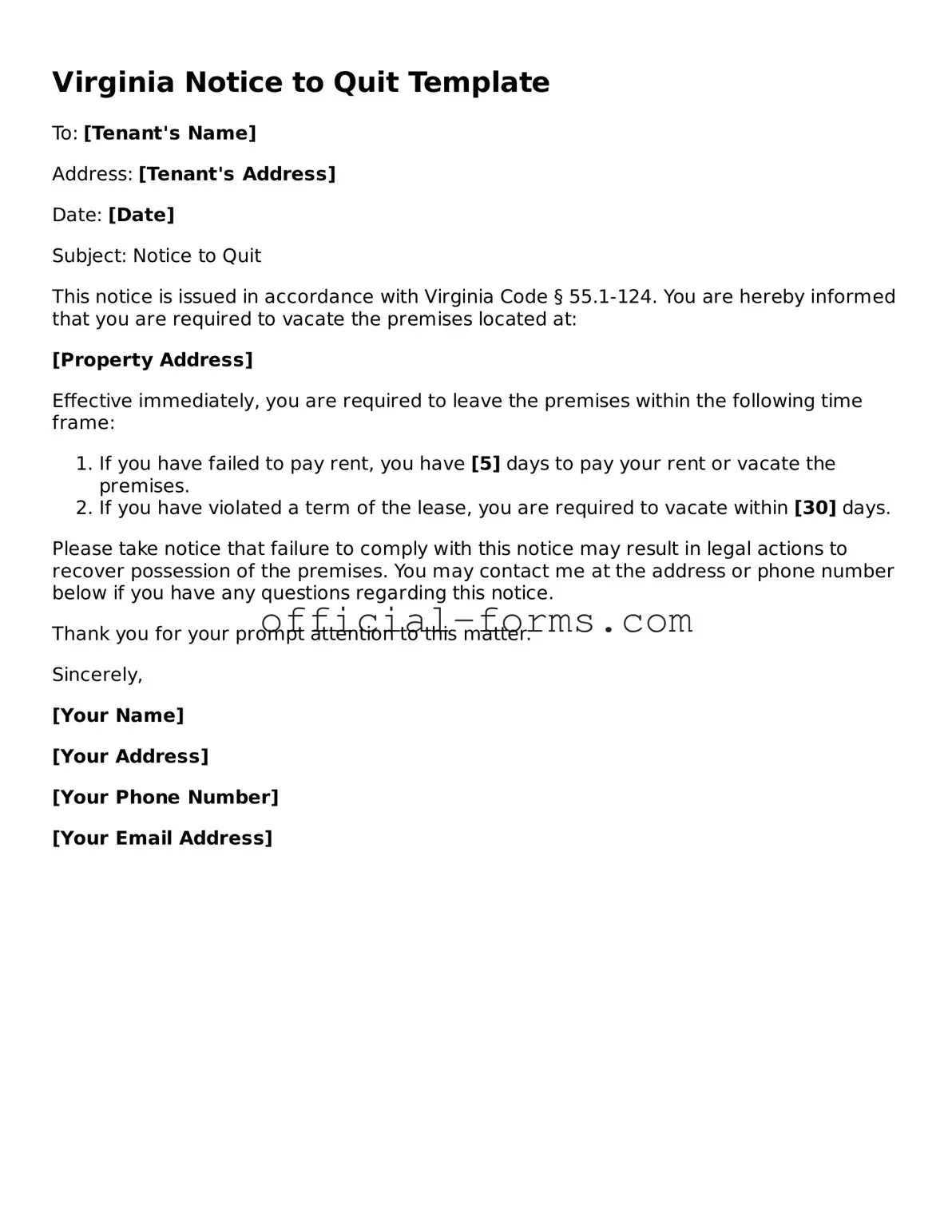In Virginia, the Notice to Quit form serves as a crucial document in the landlord-tenant relationship, providing a formal means for landlords to request that tenants vacate their rental property. This form is typically used when tenants have violated their lease terms or failed to pay rent, signaling the start of the eviction process. It outlines essential information, including the reason for the eviction, the specific date by which the tenant must vacate, and any relevant lease provisions that have been breached. Importantly, the Notice to Quit must be delivered in accordance with Virginia law, ensuring that tenants are given adequate notice and opportunity to respond. The clarity and precision of this form help protect the rights of both landlords and tenants, fostering a fair approach to resolving disputes. Understanding the nuances of the Notice to Quit is vital for anyone involved in rental agreements in Virginia, as it lays the groundwork for any subsequent legal actions that may arise.
